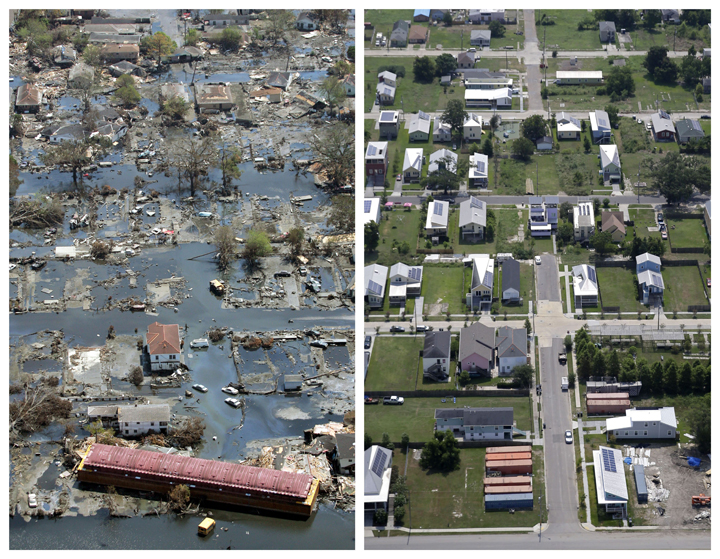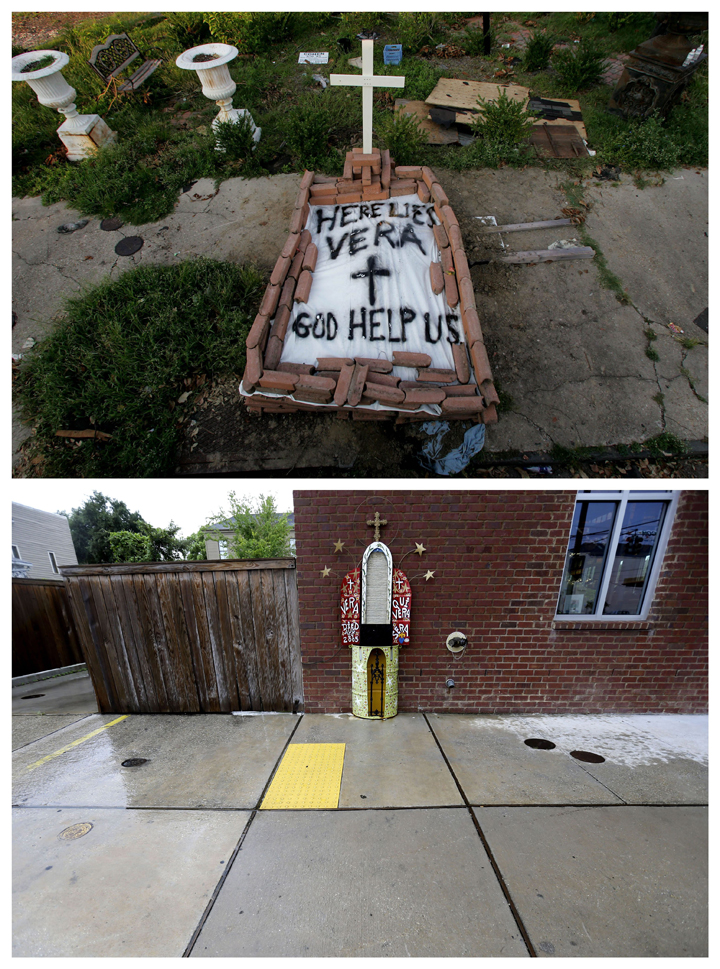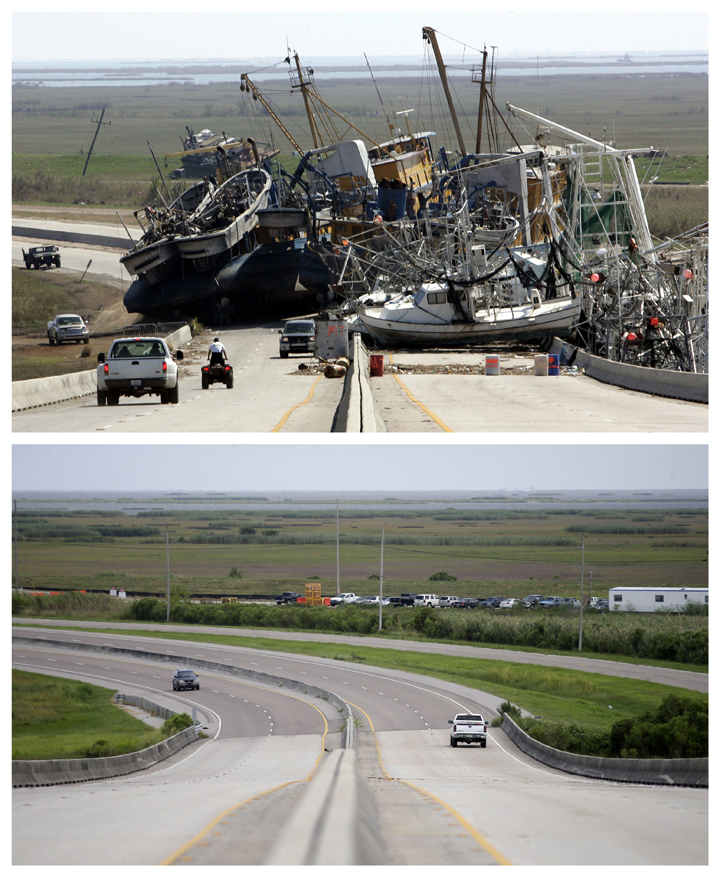TORONTO – On Aug. 29, 2005, the costliest natural disaster in American history slammed into Louisiana and Mississippi: Hurricane Katrina.

The storm — at one point a powerful Category 5 on the Saffir-Simpson scale — made landfall as a Category 3 with winds of 200 km/h, devastating the coasts of the two states.
READ MORE: Bush returns to New Orleans for 10th anniversary of Katrina
At least 80 per cent of New Orleans, Louisiana, was under water after the storm. More than 1.7 million people lost power. At the end of it all, nearly 2,000 people were killed, thousands lost their homes, and it cost the U.S. more than $108 billion.
Seasoned Canadian storm chaser George Kourounis had travelled with another chaser to Gulfport, Mississippi, in order to intercept the storm.
“It was certainly the most violent storm that I’ve ever encountered,” Kourounis said from his home in Toronto just a day before the tenth anniversary of the storm. And this comes from a man who chases hurricanes, tornadoes and almost anything else you can imagine. Was he scared?
“Absolutely.”
The most frightening part for him, however, was leading up to the storm after reading the National Weather Service’s warning.
“It was the most apocalyptic thing I’d ever read,” Kourounis said. “We were driving a day and a half with no sleep. Then we read this warning how tall buildings would sway to the point of collapse…I was thinking, ‘Oh my god. Am I going to survive the next 24 hours?'”
Kourounis and other chasers decided to take shelter in a parking garage in Gulfport, determining that that would be the safest place for them. And when the storm hit, it was tremendous.
“The sound I think was…the only way I can describe it was full spectrum cacophany,” he said. “The low rumble of the building shaking; beyond that the sound of the rain and the wind, screeching, then on top of that, a layer of debris hits, glass shattering, and then the high-pitched whistle of wind through the wires.
“All combined it was like a symphony of destruction.”
Kourounis and the other chasers left once Katrina passed over them, in the late afternoon of Aug. 29. They knew that the damage would be extensive, but they didn’t realize just how bad it was.
WATCH: Ronnie Knowles, of Cochrane, Alta., shares his experience of surviving Hurricane Katrina in Mississippi 2005.
“We only saw less than one per cent of the devastation. From Alabama to Louisiana, we only saw this micro view of what was going on.”
But as they drove on, they saw downed trees, boats and buoys from the harbour in the streets and even a floating casino barge in a parking lot. Shut off from the news, now they began to hear about levees breaching in New Orleans and the utter devastation that the city was enduring and loss of life.
As for New Orleans 10 years later, Kourounis said that if anyone had asked him at the time if the city should rebuild, he would have said no.
“I would have said they’re crazy. Why on earth would you spend all this money on a city that’s below sea level with water on three sides?”
Now, he sings a different tune.
“Having gone back, I’ve totally fallen in love with the city, and I get it now. I’m a changed person,” he said. “It’s such a unique spot. There are so many things that are different compared to any other part of the world.”
READ MORE: Obama lauds ‘inspirational’ New Orleans 10 years after Hurricane Katrina
As for the future of the city in the face of another powerful hurricane, Kourounis said that he worries.
“They’ve certainly put a lot of effort into fortifying the city, but you can never ever protect from every storm. We’ll see what will happen,” he said. “My biggest concern is the wetlands in the south. That’s a natural storm surge protection and it’s going away very quickly.”
Though it’s been 10 years since a major hurricane of Category 3 or higher has struck the United States, Kourounis, an experienced chaser knows that it’s just a matter of time.
“It can happen. It will happen. It only takes one storm like Sandy or Katrina. A lot of new people have moved to the coastline and we have short memories. People may forget how damaging these things can be.”







Comments